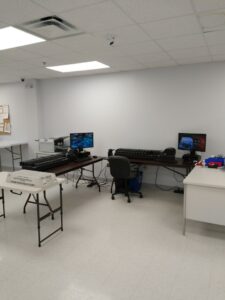Sometimes when you look to solve a problem you end up reinventing the entire lockbox process. That’s exactly what happened when Lighthouse set about the monumental task of replacing its ITran check transports. Let’s face it; scanning and sorting checks is an unfashionable business, but one that is still crucial for many businesses’ processing their accounts receivables. It has not gone away and does not appear to be going away any time soon. Despite this, the machines that handled these tasks in their heyday are rapidly becoming antiquated and have effectively reached their end of life. As parts were becoming more scarce, this meant that repairing and maintaining these machines became more expensive with each passing year. Ultimately it became necessary for us to find an alternative. In the process, we discovered a much better solution to the old check transports most often used in the industry.
“Our change was precipitated by the fact that we needed to get our organization on Windows 10, and the iTran devices were not supported. It was a security issue,” said Tom Drunsic, Lighthouse‘s CEO. “We have to be vetted by security firms, and by various banks, in order to do business with them, and running an unsupported operating system wasn’t going to work. In order to get there [to Windows 10], we would have had to pay the manufacturer for custom programming, and the price for that was exorbitant. It made no sense for an end-of-life machine, so I started looking for alternatives.” Through that exhaustive search, we found Digital Check and their Quantum DS machine. The Lighthouse team discovered that they can simultaneously run two Quantums together, which is actually faster than running the single older ITran.
“We arranged two Quantum DS machines in an L shape at each location, with one operator in the corner running both,” Drunsic said. “Because of the ease of operation, we got more documents per minute out of them. Because there are fewer jams and quicker jam resolution with the Quantum DS, our effective throughput is equal to the 300e with just one machine. With two running at once, it’s even greater. We’d never be able to effectively run two of the 300e’s with one operator – there’s too much attention required.” There’s no doubt about it, this change has made the maintenance process faster and much more cost effective as well as improving our overall lockbox process. Read the attached full case study: An Alternative for Your Old Check Transports published by Digital Check.

L Shaped Quantum DS digital check scanner congfiguration

